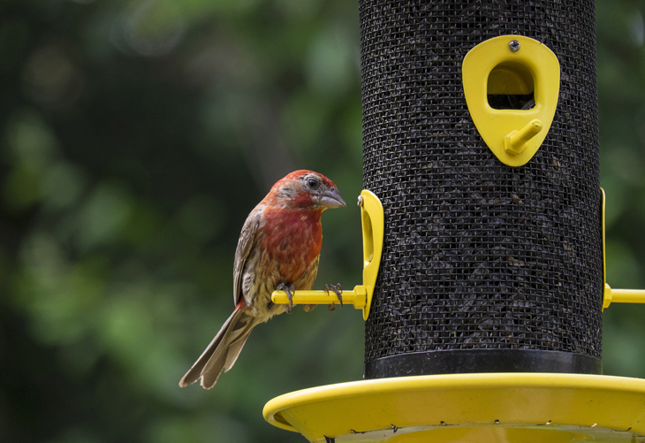
888LogGuys
- Log Home Maintenance
Who doesn’t love the musical sound of birds chirping and singing as you wake from your morning slumber? To me it is a wonderful reminder that summer has arrived.
For log homeowners, birds can be something of a mixed blessing. They bring music and liveliness to a property, but they’re often drawn to building nests beneath the eaves or in the nooks and crannies of a log house, which can result in messy droppings and potential attic dwellers. You may even be raising a fresh generation of woodpeckers, which could grow up to cause damage to your log walls.
The question then becomes how to have the harmony without the mess and potential damage… Let’s talk about ways to create a bird sanctuary, a bird perimeter if you will, that will attract all sorts of species. You get the pleasure of bird watching, the cheerful song and that nestled-in-the-woods feel without the hassles or cleanup or damage to your home. Here are some must-haves for creating areas where birds can hang out at a safer distance:
Bird Feeders
Having a variety of feeders will draw a wider range of bird species. For example, platform-style feeders often attract larger birds. Adding Black-Oil Sunflower is the most popular bird seed and attracts a variety of birds such as Blue jays, cardinals, chickadees, nuthatches, and sparrows. New to backyard birding? Black-oil sunflower seeds are a great place to start!
Some birds prefer tall, cylindrical feeders with small perches. Thistle or Nyjer is a small, high quality, seed that goldfinches love. These birds have a beautiful gold color and they are a pleasure to watch along with their cousins, the red-hued house finches and bright-colored buntings. Thistle seed requires a special bird (finch) feeder with smaller holes
Woodpeckers and nuthatches prefer suet blocks that hang in small cages and placing these as far from the house as possible could alleviate potential issues.
You can also hang nectar feeders that will attract hummingbirds or orioles.Nectar is sugar water and requires what is called a hummingbird feeder. Hummingbirds are the most notable nectar-loving birds. They are a pleasure to watch in your backyard.
In general, there are many other types of food that you can feed birds. Many birds enjoy peanuts, peanut butter, cracked corn, millet, apple pieces and oranges. Just be sure to keep these extra treats at a safe distance from your home.
Another feeding option to consider is to have native plants a safe distance from your home that naturally provide seeds, berries, and insects. This is the best and most natural way to offer food for wild birds.
Water sources
Bird baths are often beautiful decorative pieces that serve as gathering spots for our feathered friends. Be sure to place good-sized rocks in larger baths so that birds can land in the center instead of having to sip from the side. Birds are also attracted to the sound of running water, so small fountains can make a pretty and practical addition to a garden. Many are solar-powered, so you don’t need to run electrical wiring to operate them, and they can be easily relocated.
Shelter
Trees and bushes usually provide enough shade and resting spots, but you may want to put up small birdhouses or sheltered platforms if you’re creating your sanctuary in the middle of grassy areas or among the flowers. Consider planting small trees or ornamental grasses, since these can provide nesting spaces and increase the attractiveness of your garden stretch in the process.
If you love the musical sound and the beauty of bird watching, try some of these tips and don’t forget to have your camera at the ready!








